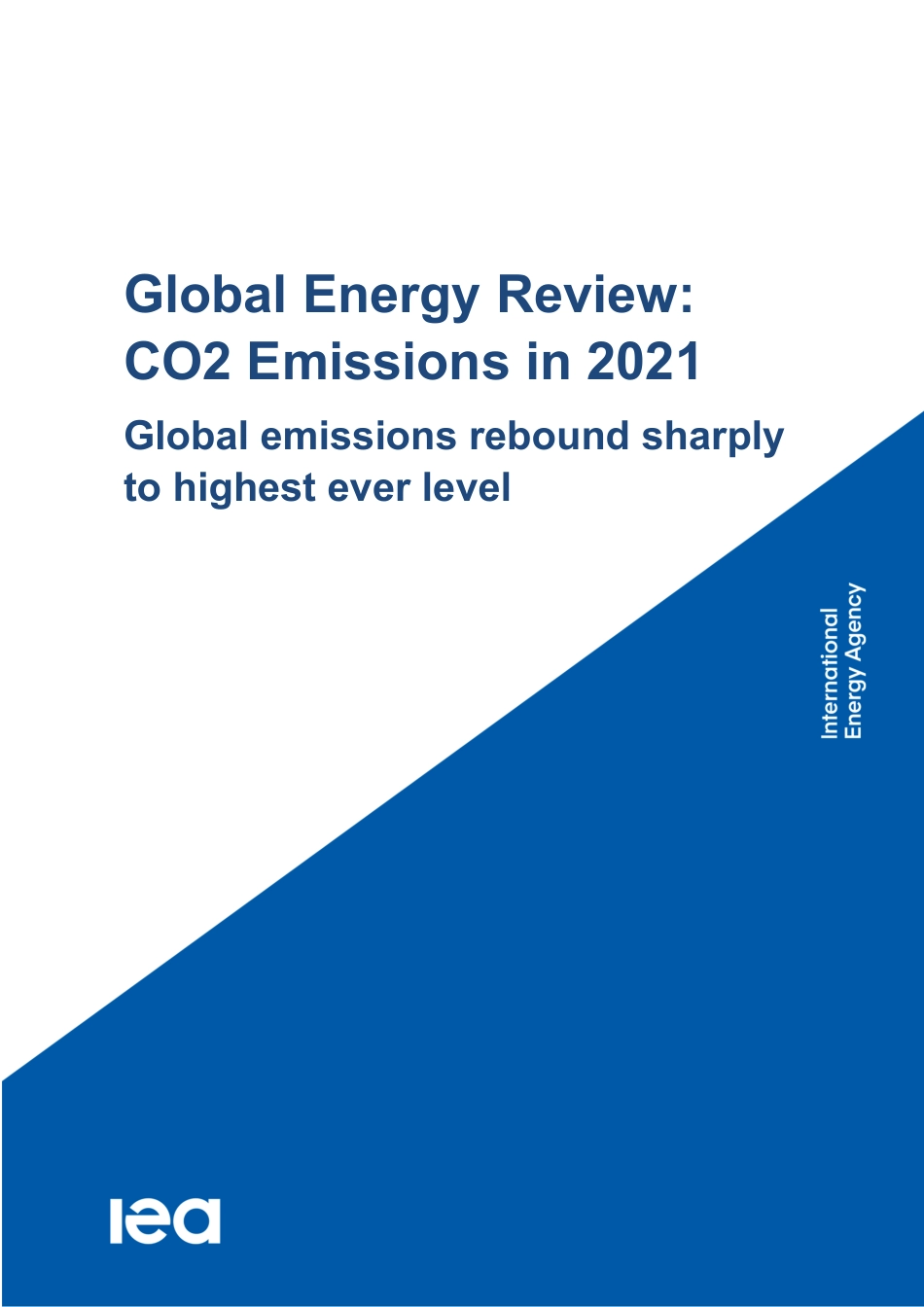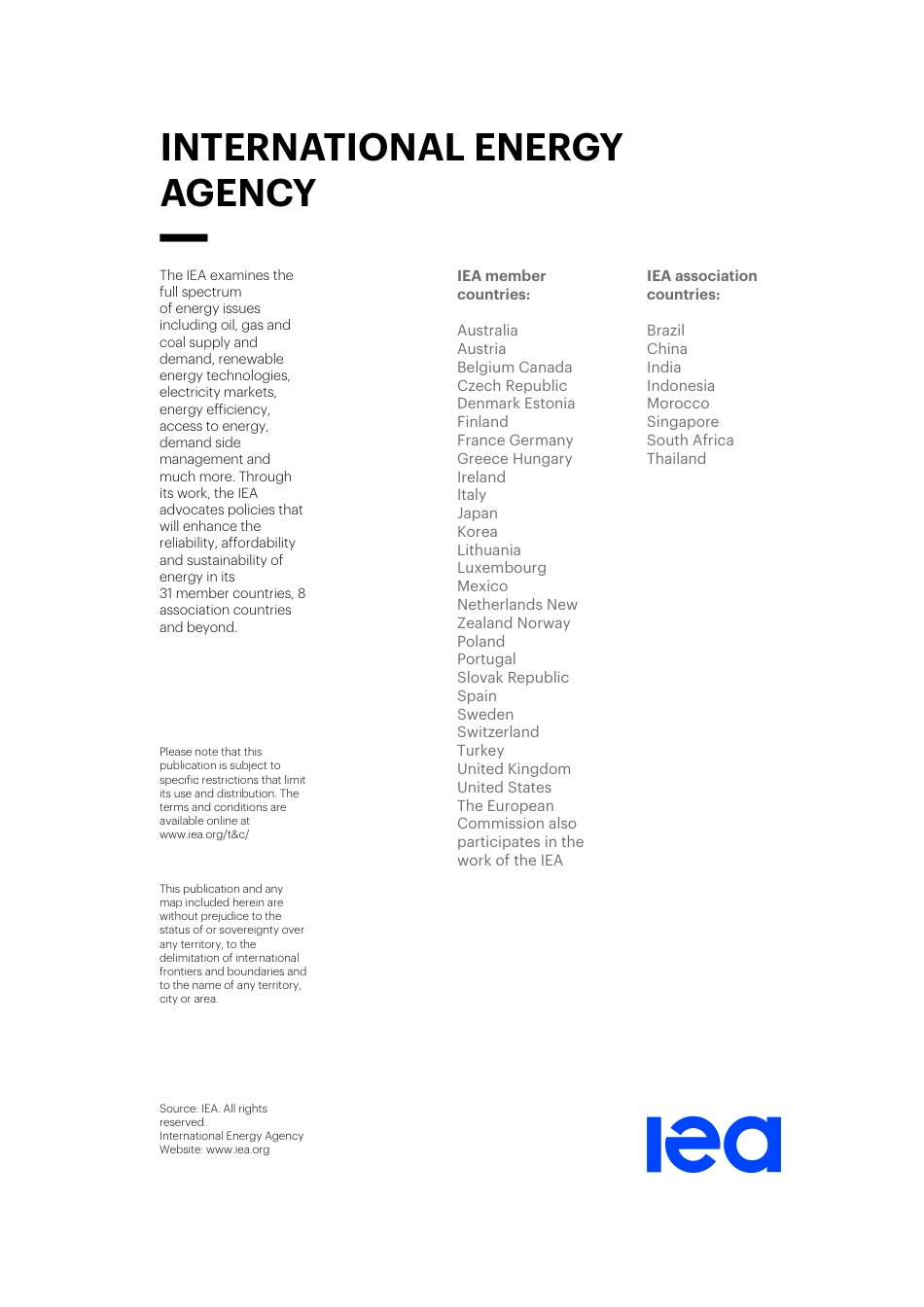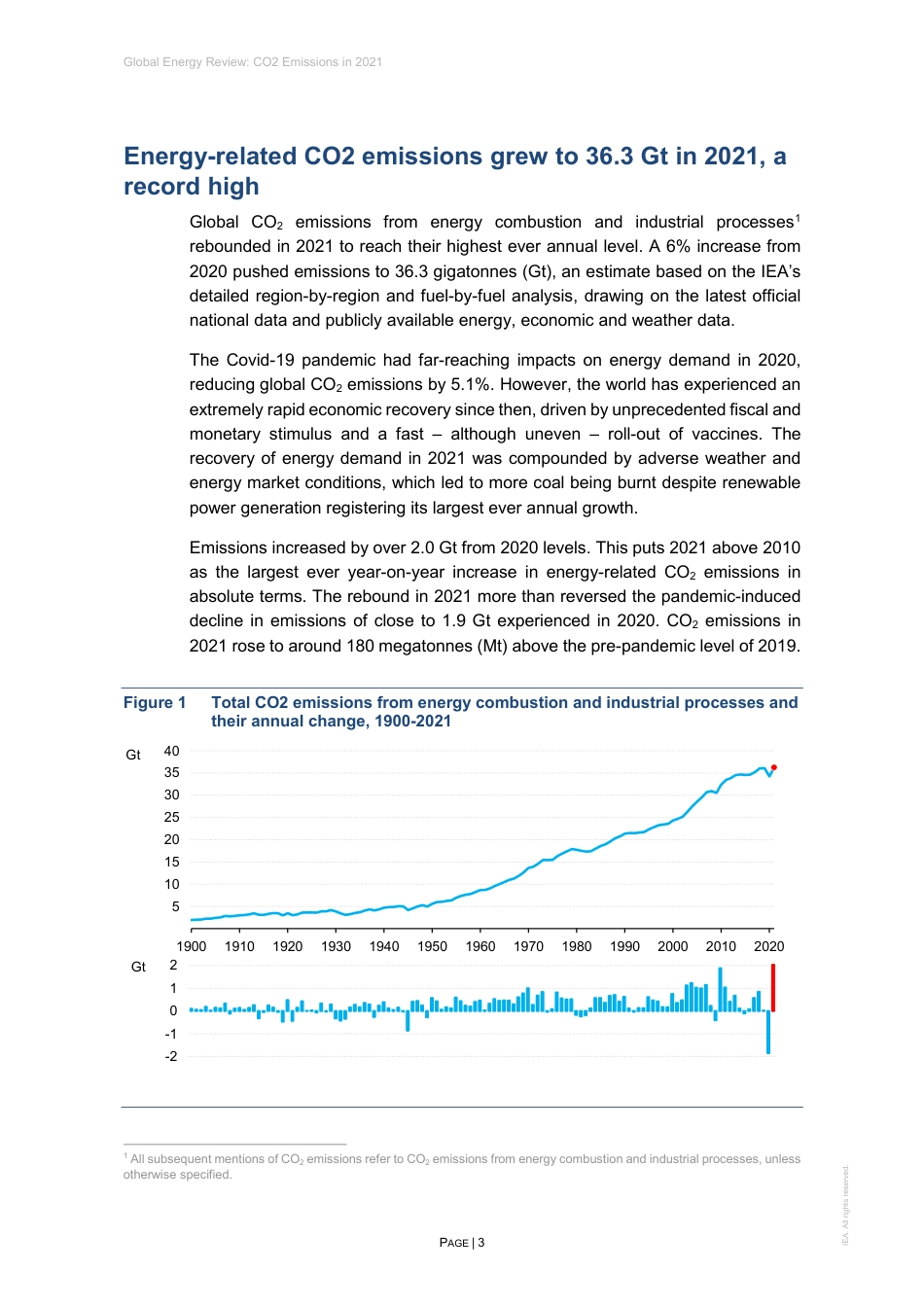Global Energy Review: CO2 Emissions in 2021 Global emissions rebound sharply to highest ever levelThe IEA examines the full spectrum of energy issues including oil, gas and coal supply and demand, renewable energy technologies, electricity markets, energy efficiency, access to energy, demand side management and much more. Through its work, the IEA advocates policies that will enhance the reliability, affordability and sustainability of energy in its 31 member countries, 8 association countries and beyond.Please note that this publication is subject to specific restrictions that limit its use and distribution. The terms and conditions are available online at www.iea.org/t&c/This publication and any map included herein are without prejudice to the status of or sovereignty over any territory, to the delimitation of international frontiers and boundaries and to the name of any territory, city or area.Source: IEA. All rights reserved.International Energy Agency Website: www.iea.orgIEA member countries: Australia Austria Belgium CanadaCzech Republic Denmark EstoniaFinland France Germany Greece HungaryIreland ItalyJapanKoreaLithuania Luxembourg Mexico Netherlands New Zealand NorwayPoland Portugal Slovak Republic Spain Sweden Switzerland Turkey United Kingdom United StatesThe European Commission also participates in the work of the IEAIEA association countries:BrazilChinaIndiaIndonesiaMoroccoSingaporeSouth AfricaThailandINTERNATIONAL ENERGYAGENCYGlobal Energy Review: CO2 Emissions in 2021 PAGE | 3 IEA. All rights reserved. Energy-related CO2 emissions grew to 36.3 Gt in 2021, a record high Global CO2 emissions from energy combustion and industrial processes1 rebounded in 2021 to reach their highest ever annual level. A 6% increase from 2020...



